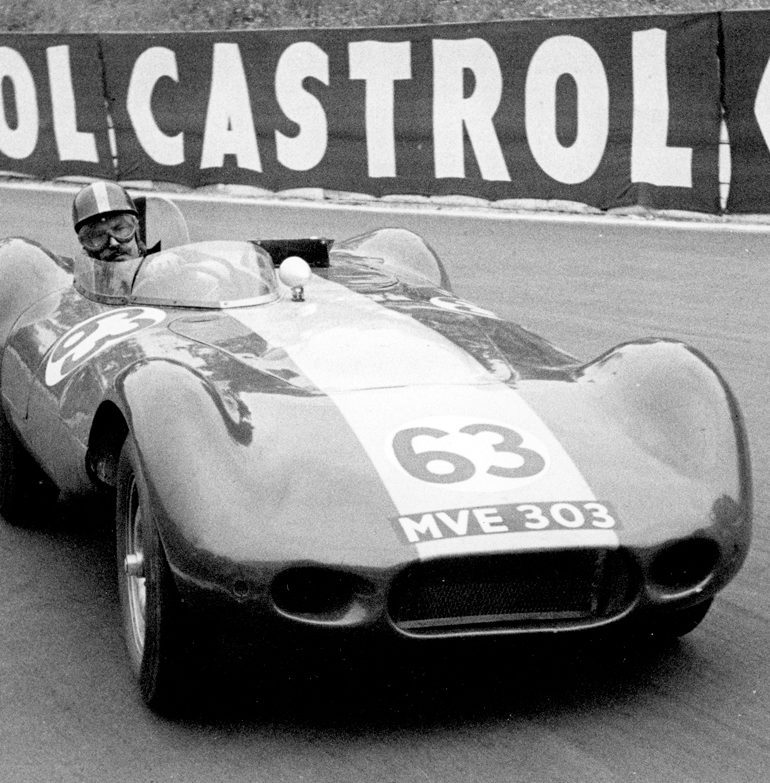The inspiration behind the concepts and designs of Lister cars came from the pre-war Mercedes racing cars that would today be regarded as Formula One cars. They were simplistic but reliable in construction, with independent front suspension, de Dion rear suspension, and tubular chassis. Many builders experimented with multi-tubes, but I think it was very experimental and they were not sure of where they were going. The multi-tube construction relied upon every tube being “loaded,” whereas the Lister single-tube construction was a successful and proven method that worked very well. One could understand what was happening with the thing, and it was cheap to make.
In those days I believed simplicity was the art of good construction, although today’s computer-aided design would challenge that belief. Design of all cars, both road and racing—since the start of the 1960s, and more so toward the end of the 20th century—has lacked personality due to the use of computers. Once, the designer’s personality would show in the structure and shape of his cars. It would illustrate an individual’s belief of the best solution to penetrate the air—an aspect completely lost today, as design is no longer an activity controlled exclusively by the human brain.
My philosophy of car design was to look at what the most successful teams were doing and using, try to built upon it and improve it, and hope I got it right. Dean Delamont of the RAC agreed with me that the de Dion rear suspension was the simplest and most effective, of the day, to use. I really didn’t have the time to look at alternatives. I needed something that was predictable, reliable, and proven; the easy option.
My greatest racecar, based upon successes and looks, would have to be the 1957 Lister-Jaguar, the first of the works cars. It had a very simple body and was a light car, but most importantly, its race success made it stand out, winning 11 of 14 races. We would have won the first race it entered if not for a simple clutch connection that went awry. The following 13 races, many against full works teams from Aston Martin and Ferrari, showed 11 wins, one 2nd place and one further retirement. In all races the car, driven by Archie Scott-Brown, broke all the lap records either during practice or during the race. Yes, it isn’t perfect, but it’s not a bad record for a racing car.
I have been asked how much was the driver and how much was the car. In any successful set-up there has to be maximum ability from both vehicle and driver, a harmony where two become one. There is no doubt that Archie was a brilliant driver, and at the Nürburgring he was in a D-Type Jaguar operated by Murkett Brothers, Jaguar distributers in Cambridge. I’m told he had never before seen the Nürburgring, a most formidable circuit, yet put up a lap time that David Murray of Ecurie Ecosse just couldn’t believe. Murray put Fangio out in one of his D-Types, and even he couldn’t get near Archie’s time. I think his character was built on the fact he had suffered and overcome terrible disability during his early life. He had something like 25 operations on his legs to enable him to walk, and his right arm was just a stump that I’ve seen raw and bleeding after a race from being pushed onto the steering wheel to maneuver the car.
The Lister race team was a little like David against Goliath. After one race win, against an Aston Martin driven by Roy Salvadori, I was in the Shell hospitality caravan having a drink with team manager Reg Parnell. He asked what my budget was for developing the Lister for the season, I told him it was about £5,000. He replied, “Christ, that’s less than one bloody crankshaft for us!”




